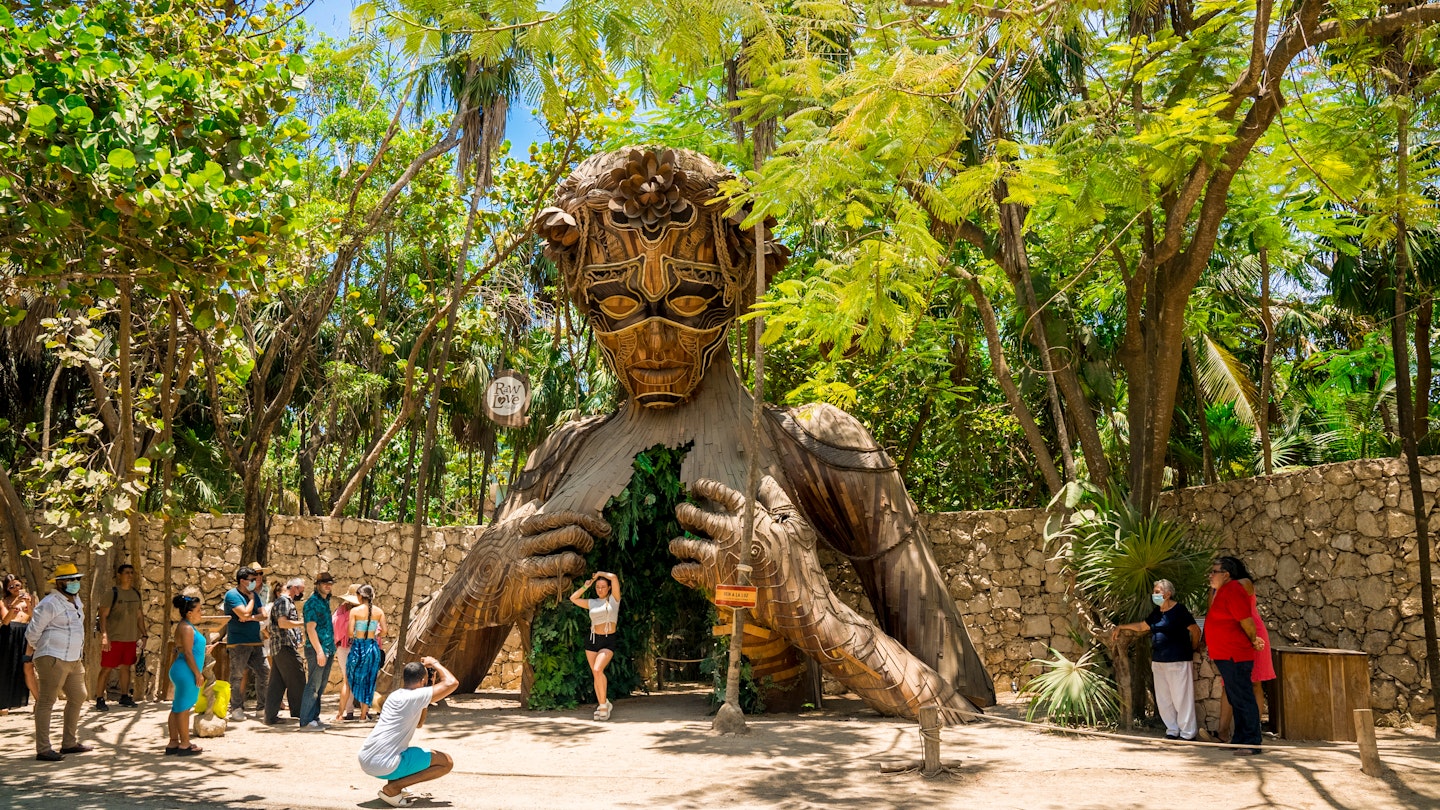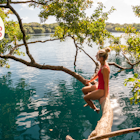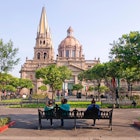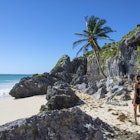When you first visit Cancún, it seems impossible that in the late 1960s, this was just a tiny fishing village surrounded by dense jungle.
However, that's when the Mexican government embarked on a tourism development project that would change this part of Quintana Roo forever – they saw the potential in its raw, natural beauty.
Today, the megaresort is Mexico’s top tourist destination and one of its fastest-growing cities. Many travelers experience Cancún as a place of wild fiestas, glitzy all-inclusives and gringo-friendly shopping centers – a tropicalized Vegas of sorts.
But it also sits in one of the most biodiverse areas in Mexico, making it a wonderland for anyone interested in wildlife adventures.
The world's second-largest barrier reef lies just offshore, while inland precious freshwater cenotes (limestone sinkholes) abound. Add Maya culture, savory regional cuisine and sophisticated ancient ruins to the mix, and you have one sweet Caribbean getaway.
Here are some of our favorite activities in this splendid southeastern corner of Mexico.
1. Gaze at mind-blowing ancient Maya ruins
Several small Maya archaeological sites dot Cancún's coast, including El Rey, El Meco and San Miguelito. While these ancient settlements are well worth visiting, you should definitely set aside time to hit some of the more spectacular ruins in Tulum, Cobá or Chichén Itzá.
After a stroll around Tulum’s sun-soaked cliffside ruins, head down to the private beach for a refreshing swim in the azure sea. In nearby Cobá, home to the Yucatán's largest temple pyramid, visitors have the unique opportunity to explore the spread-out jungle ruins on a rented bike.
And while it's true that Chichén Itzá gets too packed for its own good, we can say with confidence that the mathematical and astronomical precision behind the main pyramid will leave you floored.
Look no further than the serpent shadow formation that invariably slithers down the structure's north stairwell during spring and autumn equinoxes.
Planning tip: When visiting Chichén Itzá, get an early start to beat the heat and tour bus crowds. On the return to Cancún, consider a stop or overnight at Valladolid, a laid-back colonial city known for its cenotes and enticing Yucatecan cuisine, such as the excellent Maya eats at IX CAT IK.
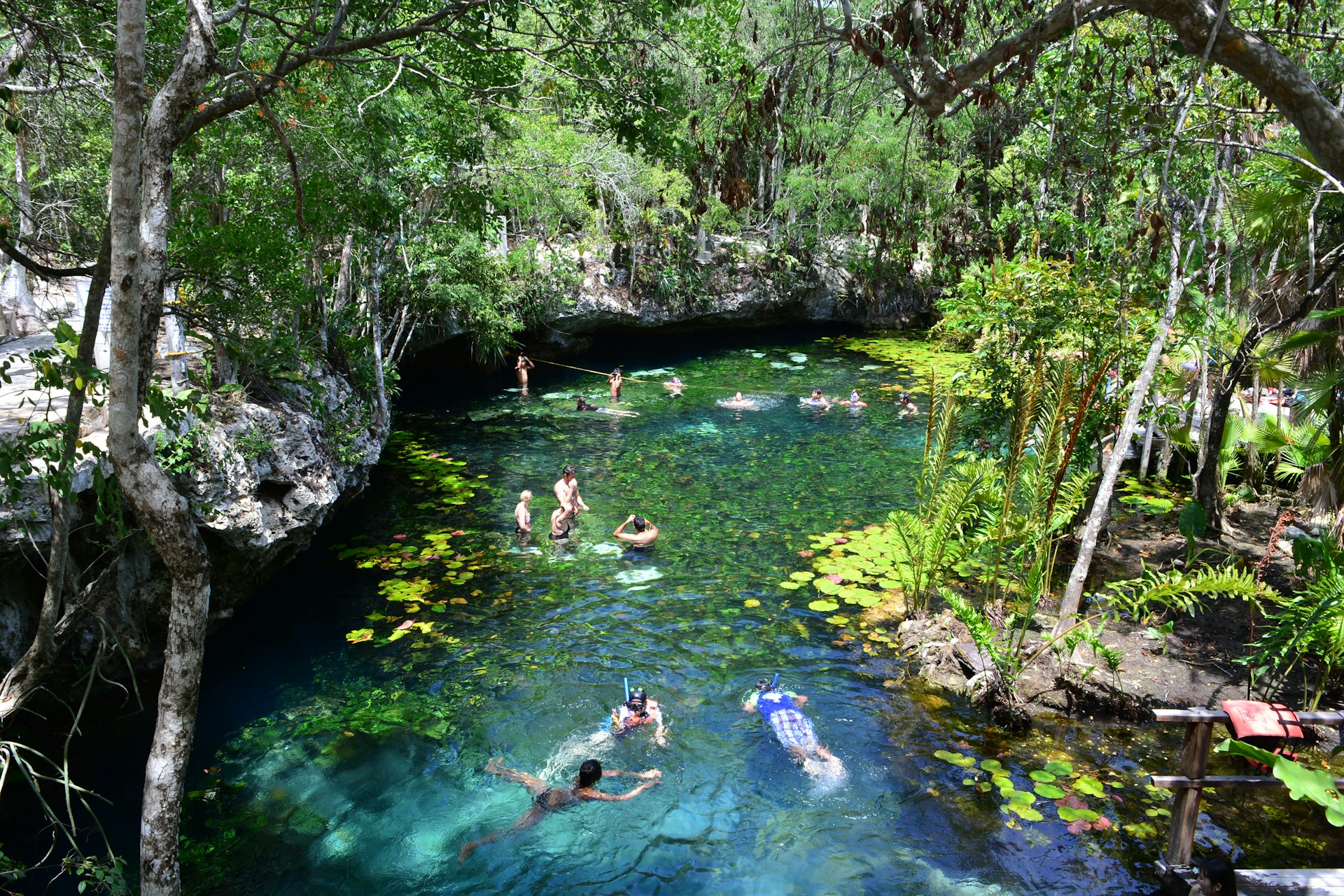
2. Plunge into sublime cenotes
The ancient Maya believed cenotes were sacred gateways to the underworld, and once you see their deep blue waters and otherworldly stalactites you'll understand why.
Many of these swimming holes make for an easy day trip from Cancún. Among the standouts, the fascinating Maya-run park Cenote Dos Ojos (120km/74 miles south of downtown) allows visitors to go swimming, snorkeling or cave diving.
For a more chilled-out vibe, cool off at Valladolid's Hacienda Oxmán Cenote (165km/102 miles west of Cancún), a former henequén property (a vast estate that produced agave plant fibers) featuring a partially collapsed freshwater cave with hanging vines.
Local tip: Cave diving can be very dangerous and is for certified divers only. Make arrangements through a dive shop and always choose a reputable outfit, such as Scuba Total.
3. Swim with massive whale sharks
Imagine the thrill of gliding through Caribbean waters alongside the largest fish on the planet. From late May to mid-September, whale sharks congregate around Isla Mujeres to mate and to feed on abundant plankton.
This provides the exhilarating opportunity to snorkel amid these majestic sea creatures, who can grow up to 15m (49ft) long. Sea Hawk Divers runs tours led by experienced bilingual guides and recommends July and August as the best months for spotting these gentle giants.
Local tip: When swimming with whale sharks, keep a distance of about 4m (13ft) and do not touch them. Also, head out as early as possible to enjoy a crowd-free experience.
4. Get up close and personal with captivating wildlife
Birders rejoice! For pleasantly uncrowded wildlife watching, book a boat tour to Isla Contoy, an 8.5km-long (28ft) island that's home to nesting sea turtles and more than 150 bird species.
From April to October, you can spot loggerhead, hawksbill and green sea turtles waddling ashore to lay their eggs.
Tour outfit Asterix operates a boat trip that includes stops for snorkeling and educational walks led by the island's resident biologists. The protected sanctuary, now a national park, receives only 200 visitors a day, so reserve your place in advance.
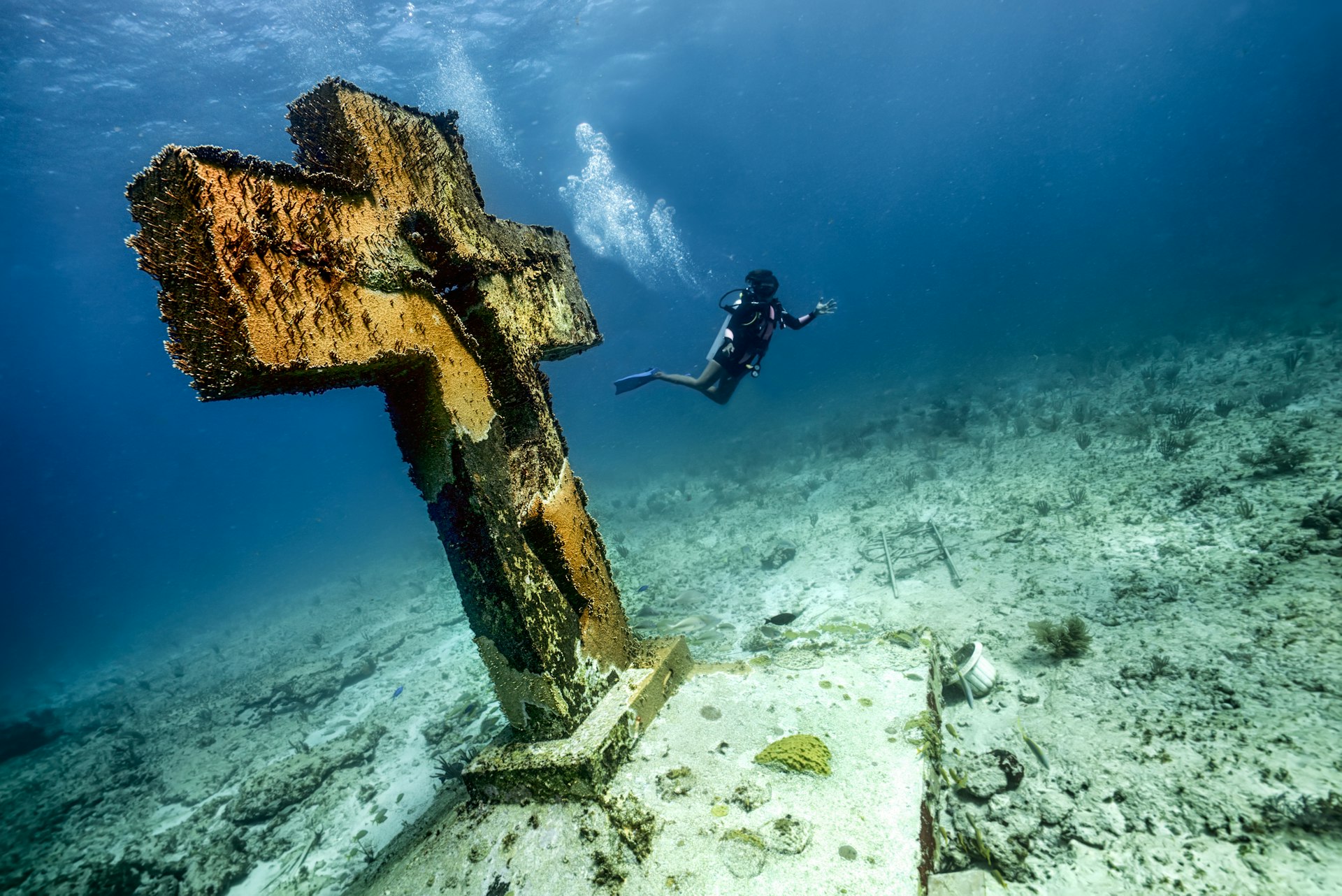
5. Marvel at life-sized sculptures in underwater museum MUSA
Created to divert visitors away from fragile coral reef formations, the Museo Subacuático de Arte (MUSA) exhibits some 500 submerged sculptures off the coasts of Cancún and Isla Mujeres.
The pH-neutral cement pieces, some of which are modeled after real-life locals, can be viewed while scuba diving, snorkeling or aboard a glass-bottom boat.
Cancún's Punta Nizuc, the shallower of the two underwater galleries, is recommended for snorkeling and boat tours, while the 8–10m-deep (26–32ft) Isla Mujeres site, Manchones, is better suited for diving. Most dive shops run tours to MUSA.
6. Soak up culture at the Museo Maya de Cancún
Tired of lazing around on the beach? Brush off the sand and hit the intriguing Museo Maya de Cancún, a first-rate anthropology museum exhibiting Maya artifacts discovered around the Yucatán Peninsula.
Among the permanent collection of some 3500 pieces is a jade mosaic death mask and intricately painted pre-Hispanic ceramics depicting supersized mythological creatures.
The museum and adjacent San Miguelito ruins offer a crash course in Maya culture and history, which will serve you well when visiting the area's many archaeological sites.
Planning tip: The museum's admission price includes access to San Miguelito, a shady jungle-set archaeological site harboring the remains of a small palace and pyramid.

7. Cheer on Mexico's high-flying masked wrestlers
Take a break from the thumping discos and treat yourself to a wacky night of lucha libre (professional wrestling).
Luchatitlán, a shiny new arena complex in the hotel zone's Plaza La Isla, stages three matches featuring colorful masked marvels performing acrobatic maneuvers as they go mano a mano before an electric crowd.
Mexican wrestling has been around since the early 1900s, and it’s still going strong thanks to cultural icons such as El Santo and Blue Demon.
Local tip: For a more affordable and authentic wrestling experience, downtown Cancún's Plaza de Toros, a former bullfighting ring, hosts events from time to time.
8. Escape to Isla Mujeres
Cancún's towering hotels and rush hour traffic make it all too easy to forget that the hotel zone actually rises up from a barrier island. But that's not the case in nearby Isla Mujeres, which looks and feels like a low-key isle.
That's especially true on Playa Norte, where the shallow aquamarine waters and unhurried pace make it one of the most swimmable and relaxing spots on the Mexican Caribbean.
The ferry crossing to Isla Mujeres takes about 20 to 30 minutes, meaning day-trippers can easily be back in Cancún for dinner. To see the quieter south side of the island, rent a golf cart or scooter and stop at beach club Garrafón de Castilla for snorkeling or take in a sunset from lookout point Punta Sur.
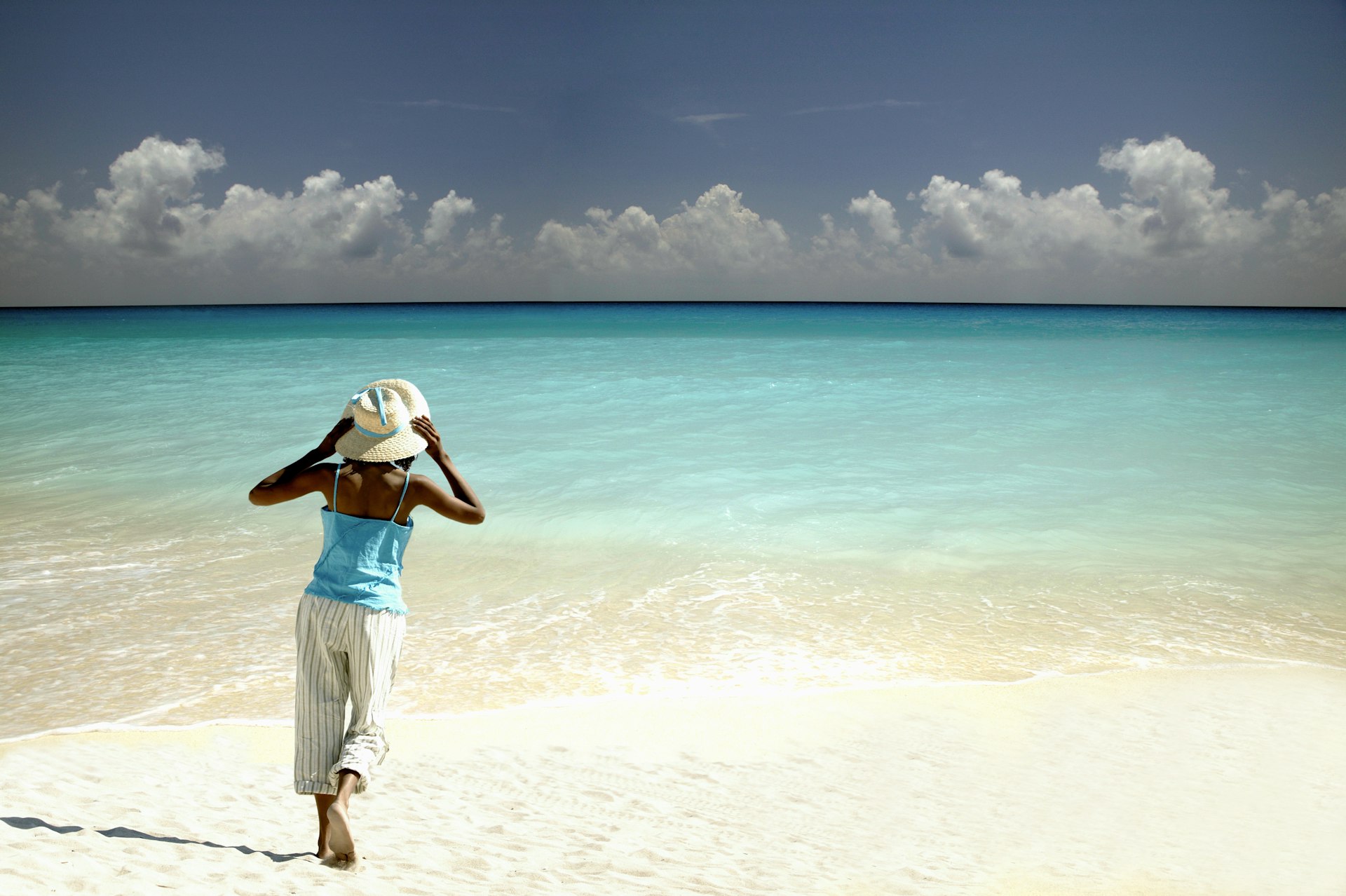
9. Bask on sustainable and off-the-beaten-track beaches
We would be remiss not to include one of Cancún's star attractions – its blissful beaches.
The sugary white sands on the L-shaped hotel zone's northern side hug some of the city's most swimmable waters, while the east-facing beaches wow beachgoers with their vibrant color palette of blues, greens and shimmering whites but beware of strong rip tides.
Playa Delfines, one of the most scenic beaches, is a Blue Flag–designated site, meaning it maintains sustainability standards such as acceptable water quality, clean sands and wheelchair access, plus it's far removed from some of the noisy beaches in the tourist center.
Detour: For a glimpse of what Cancún looked like before it transformed into a large-scale resort, head north of downtown to Isla Blanca, a 20km (12-mile) stretch of mostly unspoiled coast. Several large hotels have cropped up on the island's south end, but you can still find quiet sands on the northern tip along a narrow peninsula flanked by the Caribbean Sea, and a lagoon teeming with marine life and kiteboarders. To reach Isla Blanca, rent a car or hire a taxi from downtown Cancún.
10. Savor the local flavor of Cancún Centro
Most locals live in El Centro, so if you skip downtown, you're missing a quintessential Cancún experience.
For a taste of local culture, public square Parque de las Palapas comes alive at night with free concerts, vibrant dance performances and street artists working the crowds with amusing slapstick routines.
For classic regional fare, duck into the palapa-covered (thatch-roofed) El Pocito for homestyle panuchos (fried tortilla snacks), while for the traditional market experience, browse the aisles at Mercado 23 for colorful crafts and unique Yucatecan embroidered garments.
Planning tip: Bus lines R-1, R-2 and R-27 run frequently between Cancún Centro and the hotel zone from 5am to midnight. They're cheap and you'll never have to worry about getting overcharged by taxis.

